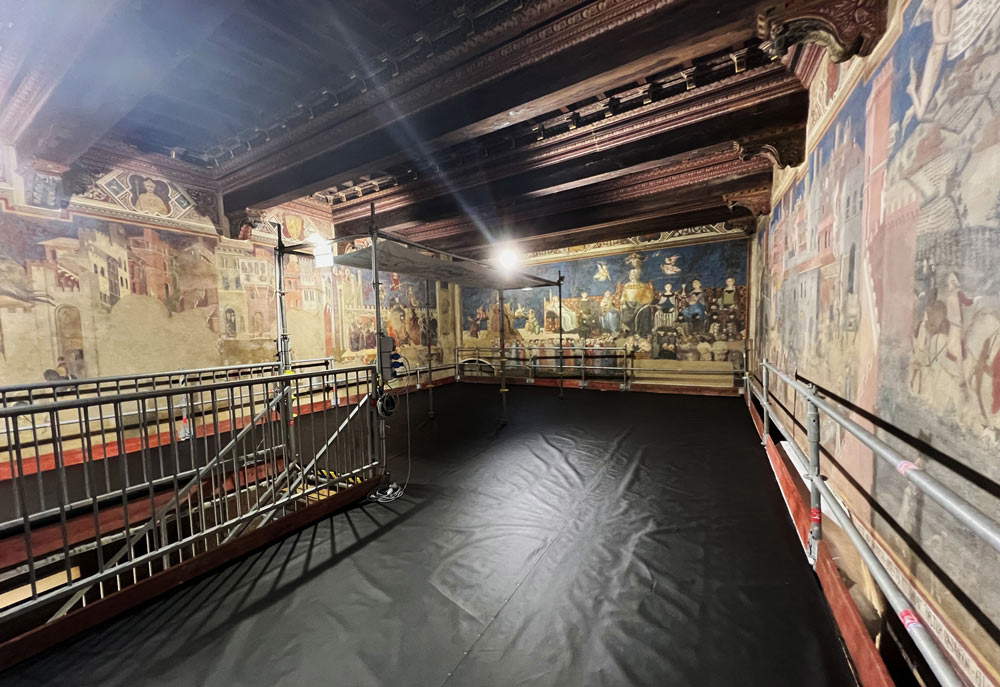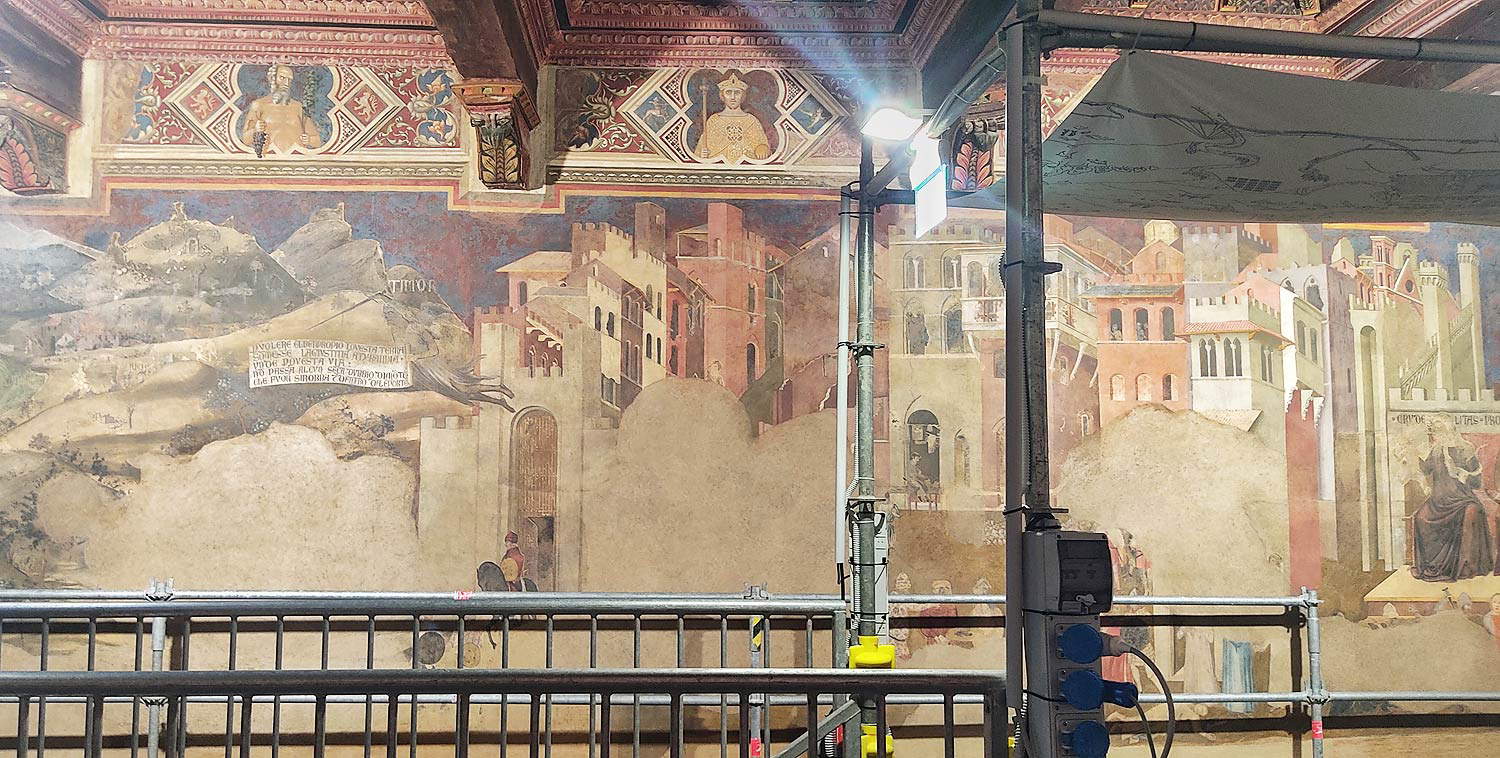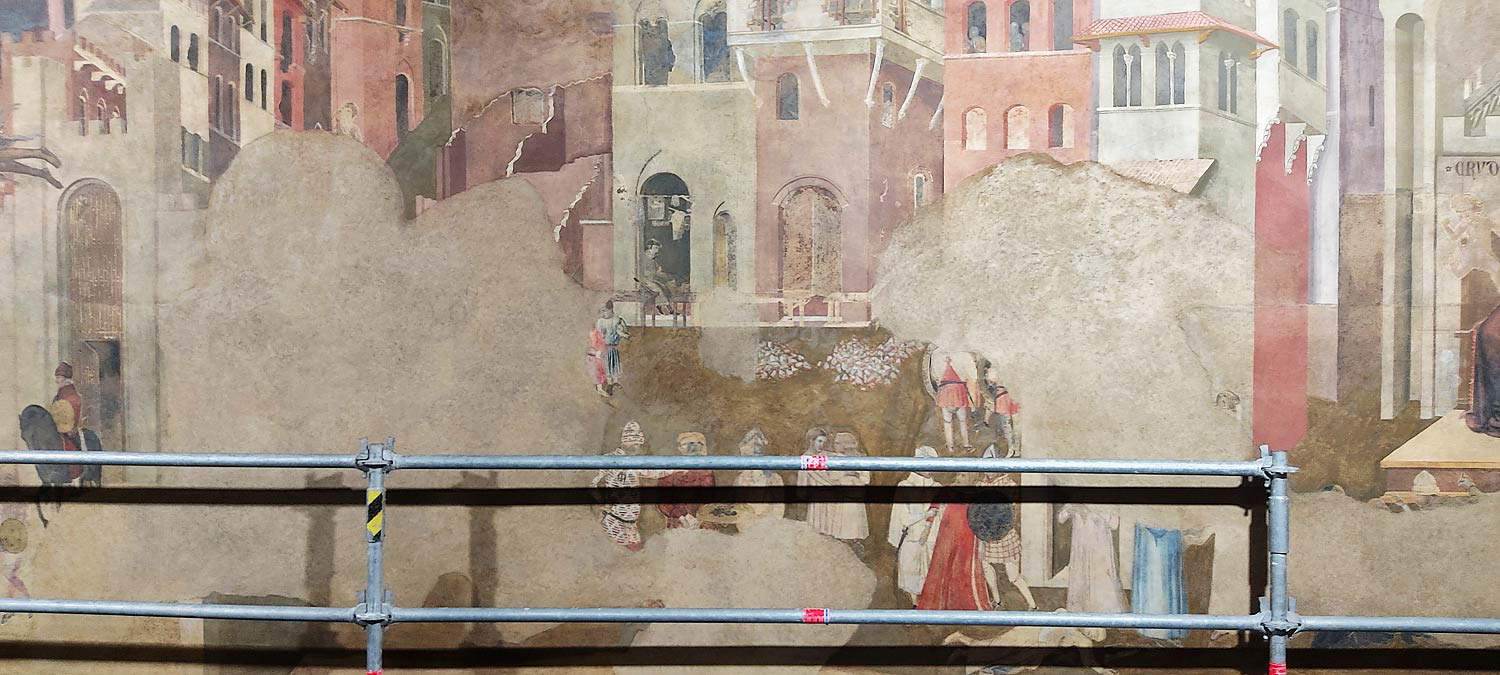Holder of an immense cultural and artistic heritage,Italy is continually called to account for the preservation of this extraordinary fragile and varied wealth, which would continually need attention to survive the centuries. But due to resources, time, expertise or simply interest these cares cannot always be ensured or at least not at their best, in particular it is certainly unthinkable that only the public and the preservation bodies in charge can take charge. For this reason to meet this kind of need, and in particular to meet the costs that restoration work often requires, private individuals intervene, be they citizens’ groups, entrepreneurs, associative realities and whatnot.
These operations, which often require substantial economic investments, are often promoted by banking or entrepreneurial entities, within marketing and image return actions. For this reason, it is not surprising that the restoration activities that are financed are sometimes linked to criteria of spectacularity, where massive and impressive operations are preferred to small maintenance, prevention or diagnostic interventions, even though it is precisely the small interventions that are fundamental for the survival of our heritage. For this reason, the restoration work recently opened in Siena involving the Allegory and Effects of Good and Bad Government, the cycle of frescoes painted between 1338 and 1339 by Ambrogio Lorenzetti in the Sala della Pace in the Palazzo Pubblico, seems to us particularly meritorious.
Making use of the collaboration of the University of Siena, the Institute of Applied Physics “Nello Carrara” of the CNR in Florence and the SABAP Superintendence of Siena Grosseto and Arezzo, as well as the support of the Rotary Club of Montaperti, San Casciano-Chianti, Siena, East Siena and Inner Wheel, the restoration work includes a monitoring and diagnostic operation of the painted surface: only at the end of this activity will the restorers decide how and whether to intervene.
Even more praiseworthy to us appears this project since the City of Siena has expressed, should the data that emerged from the research not destress concerns, its willingness to open the site also to visitors in October. This is certainly not a new cultural policy in the Tuscan capital: between 2015 and 2017 more works by Lorenzetti were restored at the museum complex of Santa Maria della Scala, and even then the public could access the worksite, while during the two-year period 2017-2018 it was the turn of Simone Martini’s Maestà, to which can be added, again by the same author, the restoration of the Guidoriccio, and again the restoration of the frescoes of Domenico Beccafumi’s Sala del Concistoro in Palazzo Pubblico.
 The
The


These are initiatives of undoubted cultural value, because in addition to making themselves the bearers of an idea of restoration on a scientific basis, that is, dictated solely by the data that emerged during diagnostics, they combine, on the one hand, the possibility of initiating new studies on iconic works that often by location are not as accessible to scholars, and on theother, they offer visitors a unique experience, an enhanced and immersive encounter with these works, but also the possibility of raising awareness among the same public about the fragility of our heritage, making the community a protagonist as well, which is called to collaborate in the conservation of these masterpieces, developing a culture of respect. The new worksite was therefore opened with the primary purpose of conducting a monitoring on the painted surface of one of the most famous frescoes of Siena and perhaps of humanity, some thirty-five years after the last restoration.
The intervention will have to assess the state of degradation of the pictorial film, and certainly there will have to be a cleaning of the abundant accumulations of dust that have been deposited since the last restoration in 1987, and which, playfully, the approximately 5,000 people who visit the famous room monthly bring with them from the outside in a relatively limited environment with a small air cubicity.
The team of restorers led by Massimo Gavazzi will perform a careful reconnaissance of the fresco, and in particular will carry out a study and mapping of the not uncommon efflorescence noted scattered across the painted surface. Efflorescence or bianchimenti are accumulations of salts (usually saltpeter), usually generated by humidity, that form inside the masonry and crystallize on the surface, going to attack the paint and creating disintegration in the plaster and color. On these, once the nature is understood, action can be taken, probably with barium hydroxide compresses. The wall of greatest concern to restorers is the one that coincides with theAllegory and Effects of Bad Government, which for reasons of technique, support and execution shows the most lacunae. As early as the mid-18th century, the Bad Government looked ruined, and the not infrequent breaks in the pictorial fabric are now supplemented with neutral backgrounds to be visually as unimpressive as possible.
Diagnostic work will thus suggest what interventions need to be undertaken on the wall painting of the Room of Nine, which contrary to what one might think, was not done entirely with the fresco technique. Since not all colors resist the caustic action of the lime on which pigment is spread in fresco, it was not infrequent in mural painting to complete or correct the painting with oil, lime or tempera colors, and even in the Sienese work there are some examples of this, such as the color verdigris, which can be exclusively spread with oil paint. Therefore, one cannot act in the same way on the whole surface, but each technique requires different solvents and treatments.
 The
The

But even today not all the techniques of the old masters are clear to us, and this is especially true with Ambrogio Lorenzetti. In fact, the life of the Sienese artist came to an abrupt end (as confirmed to us by a will drawn up by the artist), as indeed did that of his brother Pietro and many other artists, because of the terrible wave of plague that mowed down the European population in 1348, and his secrets along with those kept in many other workshops were thus wiped out. Not even recourse to that precious mine on the artistic practices of antiquity that is the Book of Art written by Cennino Cennini could make up for this loss. The artist from Colle di Val d’Elsa, in fact, who lived between the second half of the 14th century and the middle of the next, was also unaware of much of the knowledge of the past.
Some of the treatise’s limitations had already been brought to light, again in Siena, in the early 2000s, when restorers found themselves working on a cycle of thirteenth-century frescoes fortuitously found below the cathedral, in what is now known as the Crypt. The treatise writer, in fact, admonished in his manual, “red is a color called minium, which is contrived by alchemy. This color is only good to work with on the table, for if you use it in the wall, as it sees the air it immediately becomes black, and loses its color,” except that at the time of the discovery of the Crypt premises, restorers found precisely the red minium among the perfectly preserved brilliant colors. Only after some field studies were they thus able to understand that Cennini’s invective about the minium was not chemically corroborated and that this error of the writer was purely due to his lack of familiarity with the pigment.
For this reason, any worksite conducted with professionalism and diligence can be an opportunity for study, and the one we are dealing with will certainly be no exception. How much remains to be discovered about techniques, pigments used, previous restorations. But the opportunity is not only greedy for restoration professionals; in fact, there are numerous mysteries that a work as complex as Lorenzetti’s cycle holds.
ù


Among the many, the understanding of some pictorial interventions that cannot be ascribed to Ambrose still eludes us, such as the one that insists on the back wall, the one that houses theAllegory of Good Government and in particular near the right corner. This portion of the wall where the three allegories (Magnanimity, Temperance, Justice) are depicted was redone by the painter Andrea Vanni, who also intervened in the lower part immediately facing the corner in the wall of the Effects of Good Government, painting the procession of women on horseback, followed by their pages. This redo is located around 1360-1370 just thirty years after Lorenzetti’s masterpiece was completed. What motives lie behind it?
Had the painting deteriorated near the edge so soon after the work was completed? Or again was there a desire for change after the fall of the Government of the Nine in 1355 that had commissioned the cycle? Could it perhaps have been a readjustment of the cycle dictated by the fashion of the period, or perhaps new iconographic needs insisted. We also do not know how much Vanni intervened; in fact, some scholars have believed that the painter was referring to an invention that was not his own, and thus he merely restored the painting or made minor changes, but to date these are all suppositions without solid corroboration. Perhaps the investigation that will be conducted during the construction site on the architecture as well will be able to suggest whether collapses occurred in that area that forced a new pictorial intervention.
Moreover, Vanni’s is not the only intrusion into Lorenzetti’s painting; other artists had a hand in it: Pietro di Giovanni Ambrosi, for example, repainted a final portion of the Effects of Good Government on the Countryside in the fifteenth century following an infiltration from an internal eaves gutter, and later Pietro di Francesco Orioli, the same one who created the illusionistic architecture on the only wall left free by Lorenzetti, also integrated parts of fallen plaster in the Countryside View and the Allegory of Bad Government.
The cycle painted in the Sala della Pace of the Palazzo Pubblico thus attests itself as an authentic pictorial universe, an inexhaustible source of information and evidence of epochs distant to us, a sampler of techniques and iconographies, a sedimentation of varied approaches to restoration, making it a work of extraordinary interest. And this forward-looking reconnaissance, which we hope will be made accessible to all by October, may trigger new opportunities for study, knowledge and enhancement.
Warning: the translation into English of the original Italian article was created using automatic tools. We undertake to review all articles, but we do not guarantee the total absence of inaccuracies in the translation due to the program. You can find the original by clicking on the ITA button. If you find any mistake,please contact us.